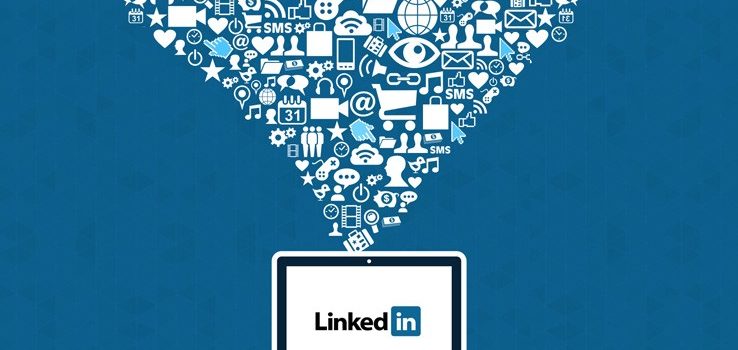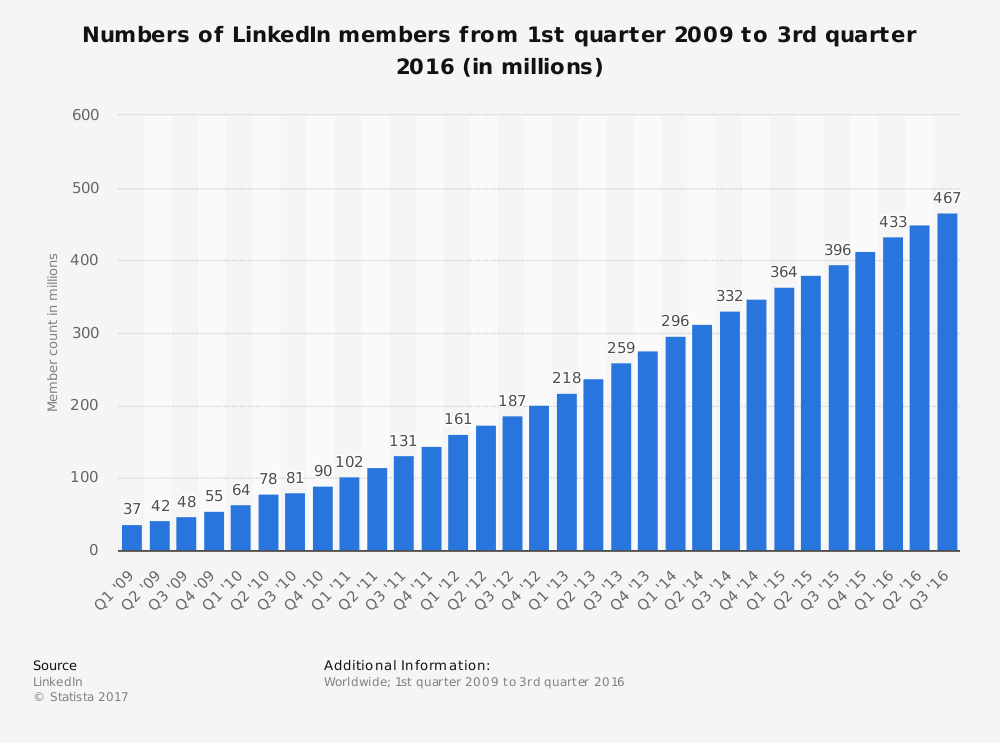How to Use the New Linkedin for Marketing

Good news! Cold calling is dead. According to UNC’s Kenan Flagler Business School, more than 80% of decision makers simply won’t take a cold call. Less than 2% result in a meeting. They’re also a massive waste of money: cold calls cost 60% more per lead than other sales methods and work less than 10% of the time – which amounts to a suboptimal return-on-investment.
Forbes has recently examined the “Death of the Cold Call” and come up with a decent cause(s) of death report: broad consumer change in attitude, sales tactics skepticism (especially among millennials), and our collective modern-day impatience.
All fair. But the biggest reason might be simpler: marketers and sales professionals have discovered better methods – for instance, the “social sale.” On LinkedIn – which has become the ideal platform and central hub of social selling – this can be as simple as posting a news article, or even commenting on one. The endgame is the same as any other sales and marketing strategy: build and land leads. The difference lies in the means. Take every vice of the cold call – this doesn’t warrant rehearsal – and replace it with social selling’s correlative virtues: where cold calls are disruptive, social selling is organic; where cold callers often come across as crude or snake oily, social sellers want to engage in a real conversation and build a strategic partnership. In short, this is B2B marketing the way it should be: a mutually beneficial (business to business) relationship.
And it’s popular because it works. According to LinkedIn’s Sales Blog, “properly implemented and executed social selling program[s]” produce five major impacts:
 There are over 450 million members on LinkedIn, making it by far the largest professional network on the internet. From a sales and marketing perspective, the upside is obvious: there are over 450 million members on LinkedIn (including 65 million business professionals). And yet, without the right approach, that same number can turn into a downside. To be clear, social selling is an exciting new development in marketing, but don’t mistake it for a total revolution. Targeted marketing still matters; lead generation still matters. If you use social media to broadcast your message, it needs to be done in a focused, non-spammy way. Otherwise all you have is a worse kind of cold call, now distributed across the internet as a case study in bad practice.
There are over 450 million members on LinkedIn, making it by far the largest professional network on the internet. From a sales and marketing perspective, the upside is obvious: there are over 450 million members on LinkedIn (including 65 million business professionals). And yet, without the right approach, that same number can turn into a downside. To be clear, social selling is an exciting new development in marketing, but don’t mistake it for a total revolution. Targeted marketing still matters; lead generation still matters. If you use social media to broadcast your message, it needs to be done in a focused, non-spammy way. Otherwise all you have is a worse kind of cold call, now distributed across the internet as a case study in bad practice.
- Pipelines are filled 28% faster
- Companies drive 18% more pipeline
- Sales conversions jump 15%
- 78% of social-selling companies hit their revenue goals (compared to 38% of non-social sellers)
- Social sellers see a 57% higher return from social selling (versus 23% of those relying on traditional tactics)
LinkedIn for Lead Generation
 There are over 450 million members on LinkedIn, making it by far the largest professional network on the internet. From a sales and marketing perspective, the upside is obvious: there are over 450 million members on LinkedIn (including 65 million business professionals). And yet, without the right approach, that same number can turn into a downside. To be clear, social selling is an exciting new development in marketing, but don’t mistake it for a total revolution. Targeted marketing still matters; lead generation still matters. If you use social media to broadcast your message, it needs to be done in a focused, non-spammy way. Otherwise all you have is a worse kind of cold call, now distributed across the internet as a case study in bad practice.
There are over 450 million members on LinkedIn, making it by far the largest professional network on the internet. From a sales and marketing perspective, the upside is obvious: there are over 450 million members on LinkedIn (including 65 million business professionals). And yet, without the right approach, that same number can turn into a downside. To be clear, social selling is an exciting new development in marketing, but don’t mistake it for a total revolution. Targeted marketing still matters; lead generation still matters. If you use social media to broadcast your message, it needs to be done in a focused, non-spammy way. Otherwise all you have is a worse kind of cold call, now distributed across the internet as a case study in bad practice.
FEATURED ONLINE PROGRAMS
-
>Master’s in Marketing Communications
The Marketing Communication master’s concentration prompts you to analyze consumer behavior, conduct market research, and engage the power of brands and messages in order to develop powerful digital marketing strategies. Evaluate various tactics, measure their effectiveness, and explore the intricacies of working with or in complex, multi-functional teams to execute compelling marketing campaigns. Highlights:
- Top 100 university
- 100% online
- No GRE
SPONSORED
LinkedIn features a few lead generation tools. First, advanced search. After LinkedIn launched a new interface in 2017, users initially feared that advanced search had been absorbed into LinkedIn Premium. It turns out they were only half right. While Premium’s Sales Navigator is the more granular, powerful search engine (more in a second), LinkedIn’s traditional search still features a multi-layered filter system, including type (people, businesses, groups, etc.), location, connection, and current company. For many professionals, this works.
Sales Navigator is a step up, particularly for generating B2B leads. Three tiers are available: professional, team, and enterprise. Features run the gamut: advanced lead and company search, including granular filters; customized lead recommendations; CRM integration, including notes and tags; real-time updates on accounts and leads; InMail messaging and more. (HubSpot has a helpful guide for how to maximize your Sales Navigator platform.) Depending on the size of your business, the premium features may be more than you need, but its main advantage is worth highlighting: Sales Navigator eliminates a significant amount of early pipeline development, and therefore frees up time and money to pursue quality prospects.
Improve Your LinkedIn SEO
SEO is a major (overlooked) factor of inbound marketing on LinkedIn. Some tips:- Your company’s description has a 156-character limit: meet the limit and leverage keywords. (Once you fill your pipeline, you should have a good idea what keywords fit your audience.) Consider the company description just as carefully as would any advertising copy: a clear mission statement and strong keywords can drive traffic, increase SEO, and boost your brand.
- Consider targeted ads: in 2015, 50% of B2B marketers said they were more likely to buy from a company they’ve engaged with on LinkedIn. Plus conversion rates are high. Per HubSpot, U.S. customers drive a 6.1% conversion rate from LinkedIn Ads, compared to 2.6% among Google B2B advertisers.
- Create a LinkedIn Showcase page to extend your presence: drive engagement, share company updates and sponsored content, create sales funnels, and develop long-term relationships with LinkedIn members. (Note that Showcase pages act as secondary pages to spotlight a specific brand, business unit, or initiative; LinkedIn recommends using other products for individual campaigns.)
- Encourage your employees to share company updates, which can increase SEO potential as well as promote your brand. (Some company’s social media managers help in this area.)
LinkedIn Video for Marketing, Branding, and Engagement
LinkedIn’s new video platform allows organizations and business professionals to share ideas, join the conversation, promote a brand, and, through audience insights, see who’s watching. Why “pivot to video” for social selling? A few interesting stats:- Global consumer Internet video traffic will account for 80% of all consumer Internet traffic by 2019
- Social video generates 1200% more shares than text and images combined
- 75% of business executives watch work-related videos weekly, and 59% of senior executives say that if both text and video are available on the same topic on the same page, they prefer to watch video
- Viewers retain 95% of a message when it’s in video form compared to 10% when it’s in text
- 73% of B2B marketers report that video has a positive impact on ROI, including 27% higher clickthrough rates and 34% higher web conversion
- Landing page videos can increase conversion rates by 80%
- Video marketers report earning 66% more qualified leads per year and a 54% increase in brand awareness
- LinkedIn for Community Engagement
- Post a Status Update: The easiest way to stay visible, and visibility is key. It might be as simple as sharing an article, or sharing an article with an additional comment. Better yet, ask your followers for their opinion and continue the conversation in the comment section.
- Publish an Article on LinkedIn Pulse: As LinkedIn pushes toward operating as a content platform, marketers should capitalize. Paul Shapiro has written a helpful guide, 10 LinkedIn Publishing Tips, based on an analysis of 3,000 posts. But common sense works just as well. Every article represents your brand – make sure it’s accurate, appropriate, and well-written. Guides perform well, and remember to format the post for readability and engagement (images, headers, section breaks, etc.). This is your best opportunity to join the conversation, or even lead it.
- Join LinkedIn Groups: Think of groups as akin to online trade organizations, or perhaps more relevant, online discussion forums. As with other tools you can add your two cents, but it’s often more beneficial to listen. Groups are where you can pick up industry tips, news, resources, and tricks of the trade in an intimate, collaborative environment. Even if you don’t regularly engage, membership is important for credibility and visibility.

